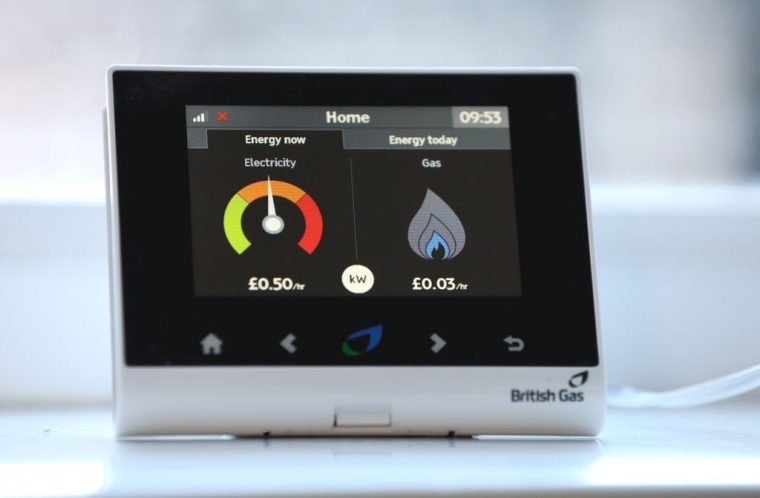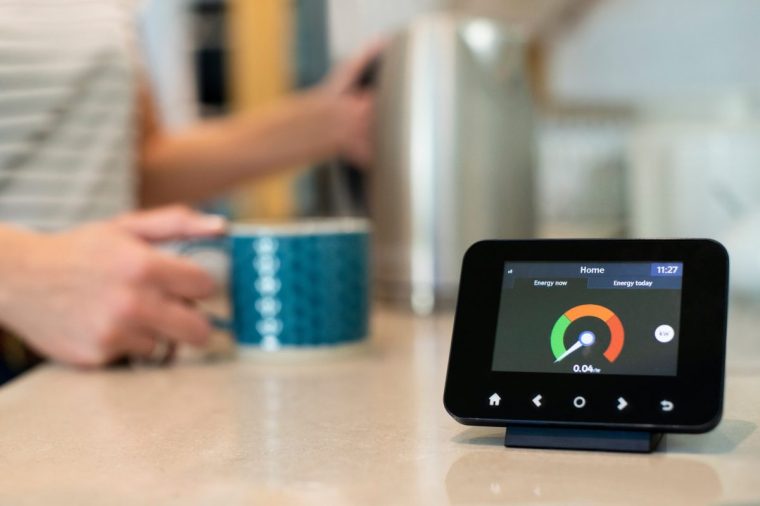Households are at risk of overpaying on their energy bills if their smart meters are faulty or wired incorrectly.
Customers are urged to keep an eye on their energy bills as it has been reported that almost four million smart meters across Britain are not working properly.
People have reported being hit by massive bills which they say have been caused by faulty meters. One couple told the Mail Online the cost of boiling the kettle for a cup of tea rocketed to £5 overnight after they had a smart meter installed and it was later discovered to have been installed incorrectly
If a smart meter isn’t connected properly, it can send estimated bills instead of bills based on actual usage. Technical problems can also prevent some meters from operating in smart mode.
Smart meters were introduced to help households and businesses take control of their energy usage, leading to greater efficiency and cost savings. However, faulty smart meters are causing a headache and financial challenges for customers, especially given the rise in the price energy price cap.
What is a smart meter?
Smart meters are electronic devices that measure how much gas and electricity a household is using, sending automatic readings to energy suppliers.
These readings allow suppliers to bill customers for their usage accurately.
Customers without a smart meter have to provide regular manual readings or pay estimated energy bills, which may not reflect their actual usage.
Smart energy meters are designed to accurately measure a consumer’s use of gas and electricity and calculate the cost in near real-time. They come with a display screen which tells customers how much energy they are using.

Smart meters also send readings to suppliers via a remote connection called “smart mode”. If this connection is lost, however, suppliers rely on an estimated bill until the consumer provides their meter readings.
The idea of smart meters is that customers shouldn’t need to manually record and send meter readings to their energy provider. In return, their bill is supposed to be more accurate – if their meter is working correctly.
How many smart meters are faulty?
Figures released by the Department for Energy Security and Net Zero show that 3.98 million smart meters were not working as they should at the end of 2023.
This includes devices which are not operating in “smart mode” and are failing to send automatic readings to energy suppliers.
According to Smart Energy GB, a non-profit organisation focusing on the benefits of smart meters, there are now almost 35 million smart meters in Great Britain and the vast majority are operating as intended.
Smart Energy GB says smart meters are as accurate as traditional meters and that by law, all smart meters have to be approved by and certified by the Office of Product Safety and Standards to prove their accuracy. If people believe there is a fault with their smart meter, they should report it to their energy company.
What are the issues with faulty smart meters?
There are a number of issues which can lead to inaccurate smart meter readings.
This includes failed communications if a smart meter has stopped functioning as it should.
While smart meters are designed to give accurate energy bills, faulty meters can produce incorrect readings leading to overcharging or undercharging.
Making sure your smart meter is calibrated correctly can prevent these issues. If customers notice discrepancies in their energy bills, they should get in touch with their supplier and keep track of their manual readings.
Some customers also report problems with their smart meter’s in-home display device. Issues can include the display failing to sync with the meter or showing outdated information which prevents them being able to monitor their real-time energy usage – which defeats the purpose of the device.
There can also be problems with network issues as smart meters rely on a wireless network to send data to energy suppliers.
If there are connectivity issues, such as poor signal strength or the network being temporarily down, the smart meter may not be able to send readings, leading to estimated bills.
How will I know if my smart meter is faulty?

An unexpectedly higher than usual bill can be a sign that your smart meter is not working properly.
A blank screen on the meter or messages such as “error”, “call help” or “battery” are also signs that a smart meter may be faulty.
If your bill readings are marked with an “e”, this indicates that they are estimated and that there may be an issue with your meter. According to Which?, readings on your bill should be marked “smart.”
What should you do if you think your smart meter is faulty?
If you believe your smart meter is not functioning correctly, contact your energy supplier and ask them to investigate.
In many cases, suppliers can resolve issues remotely or send a technician to inspect the device. From the day you report any issues, your supplier should update you within five working days.
If there is an issue, the supplier should help to fix the meter. If they fail to do so within eight weeks, Ofgem has a guide on how to complain to the Energy Ombudsman. It advises taking manual meter readings in the meantime.
For impartial advice on resolving smart meter problems, contact Citizens Advice. You can also use their smart checker tool to see if there is a problem between the meter and the central network.
Until the issue is resolved, regularly record your energy usage to ensure your bills are accurate.
You can also request an independent test of your meter says Smart Energy GB.
Although it is free, you may have to pay your supplier for organising it if your meter is found to be working correctly.
The energy price cap
Gas and electricity bills rose again on 1 January, with the average price-capped bill now at £1,738.
In practice, this means a household using the typical amount of energy will see an increase of around £21 per year – at least until Ofgem next updates its price cap in April 2025.
Your energy bill, however, depends on the overall amount of gas and electricity you use, and how you pay for it.
How many people you live with, the type of property you own, how energy efficient it is, and even the weather make a difference.
A flat or a one-bedroom house with one or two people living in it has an energy bill of around £1,261 per year on average, according to Ofgem figures.
A two or three-bedroom house with the same number living in it has an energy bill of around £1,738 per year on average.
Analysts at Cornwall Insight predict the price cap will rise to £1,785 in April, an increase of three per cent on January’s cap.


